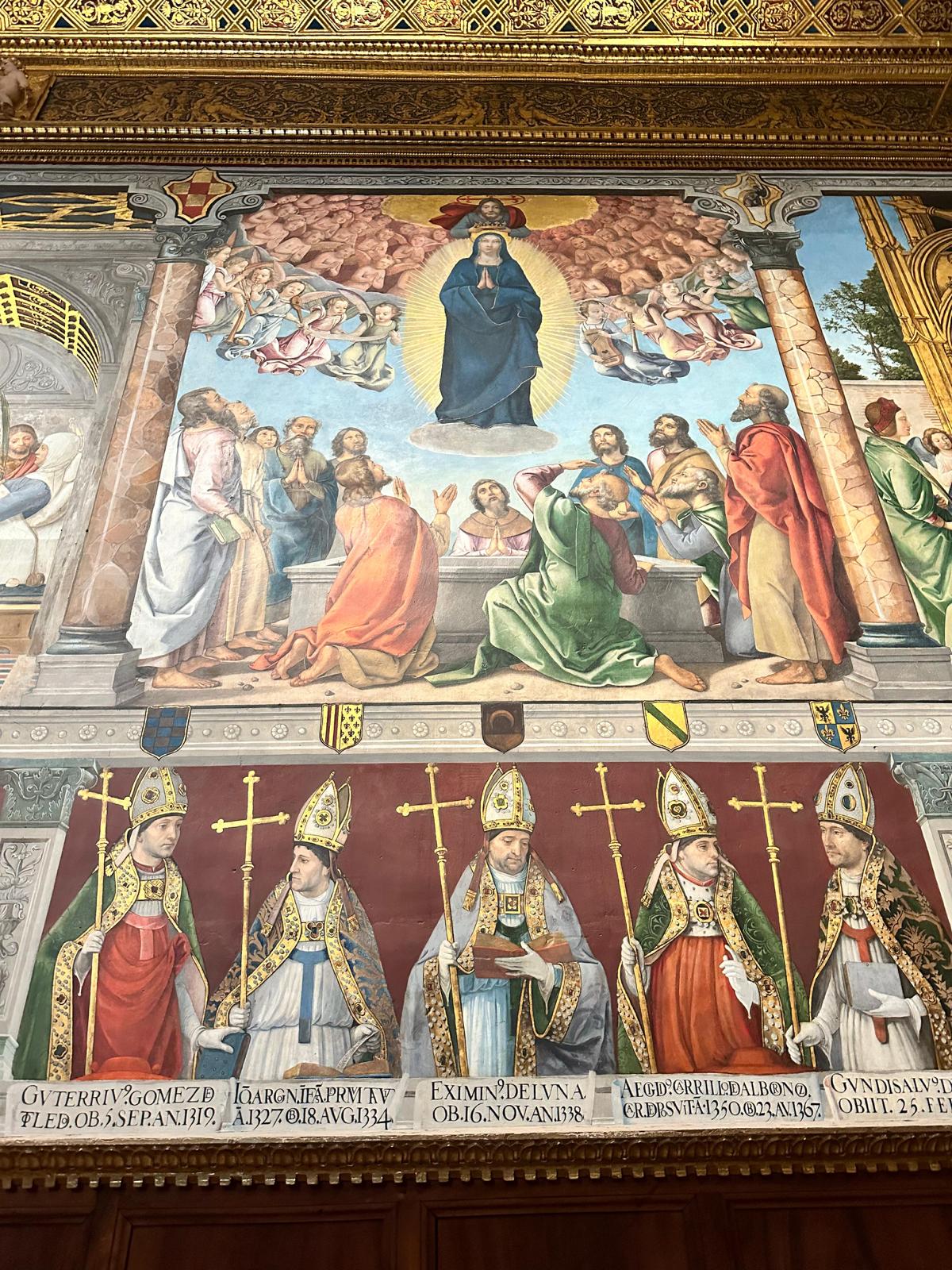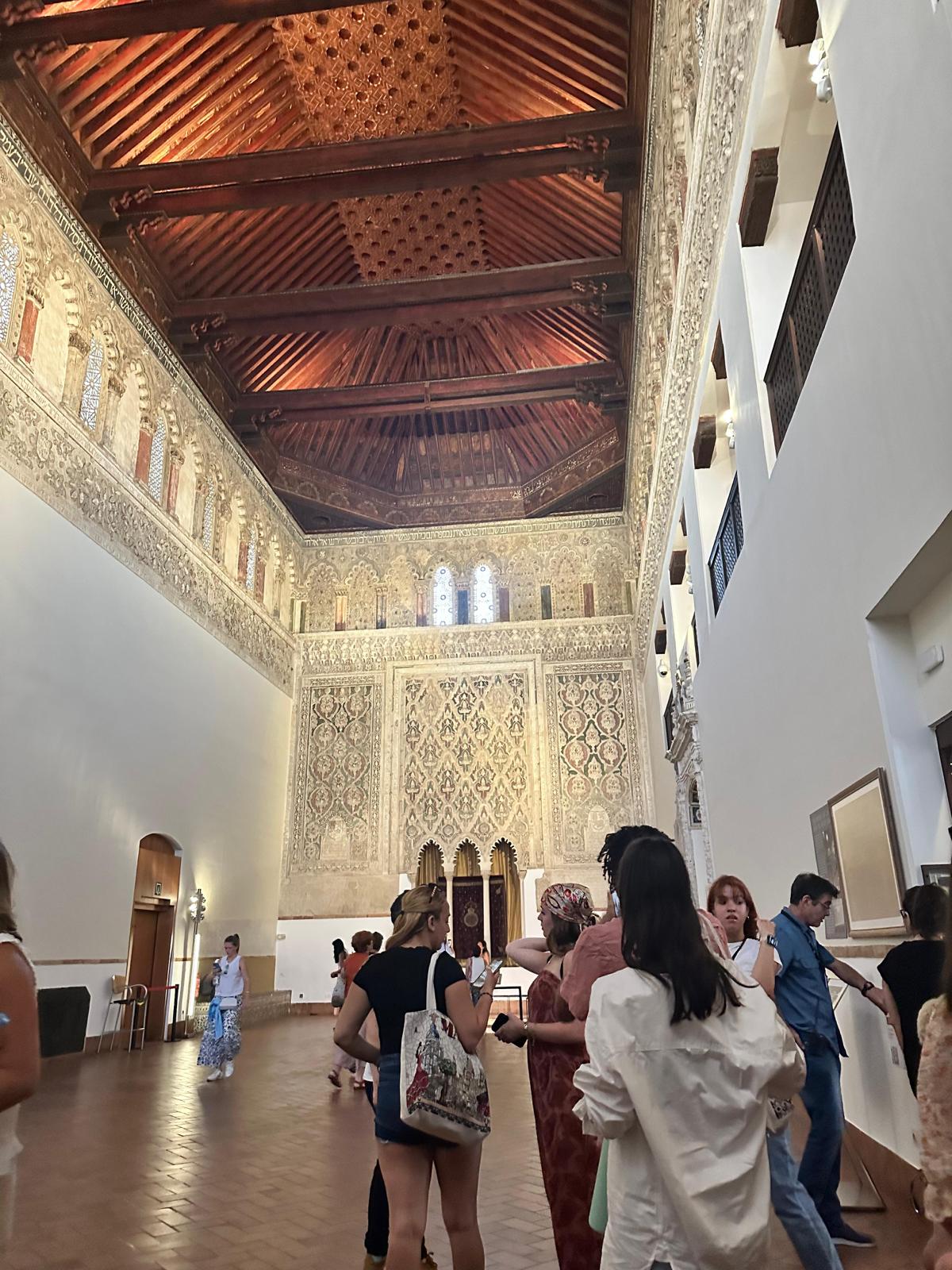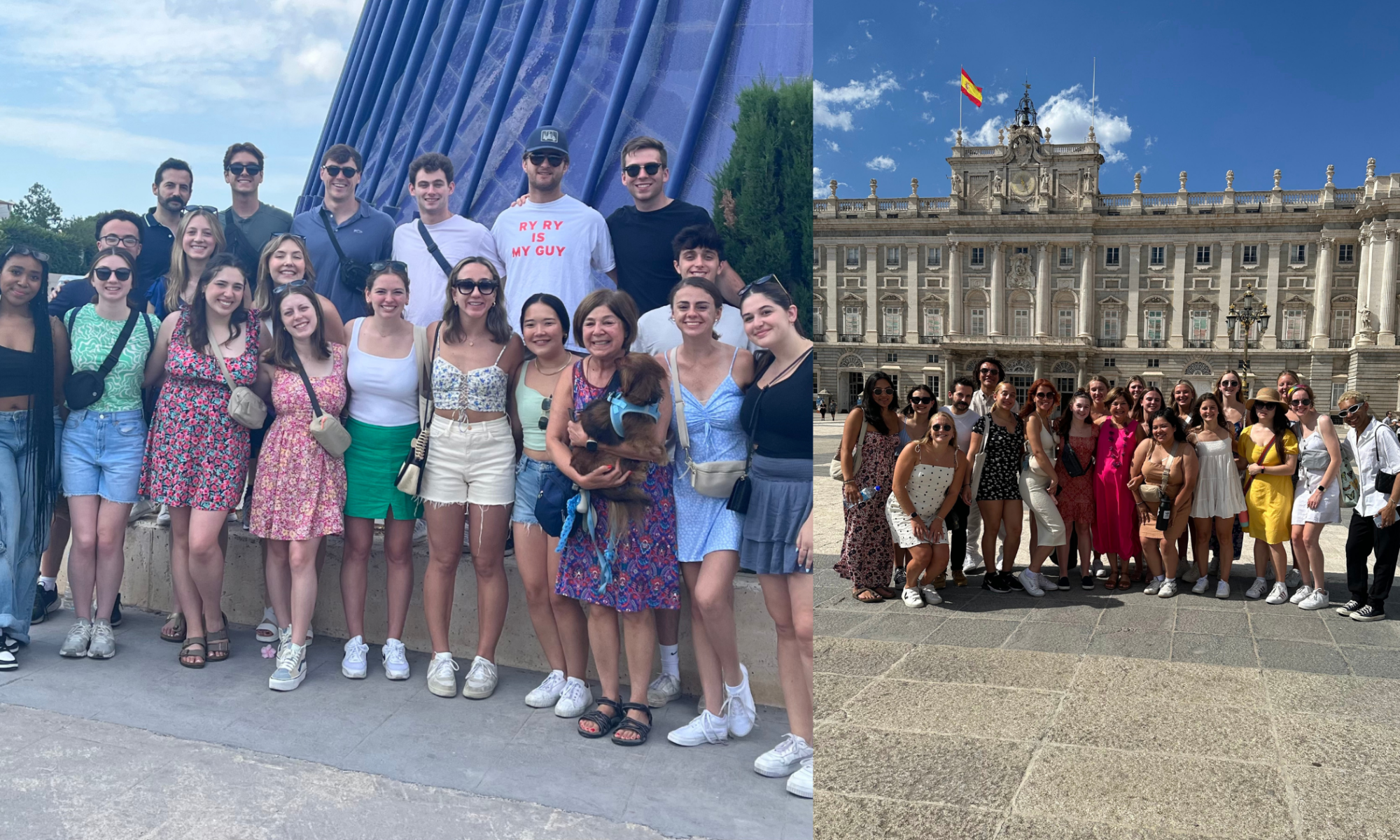Written By: Madeline Morton ’25 (Session 2)
This past weekend, we had our first excursion outside of Madrid to the beautiful, historical city of Toledo. Although our walk from the train station to the hotel was a grueling uphill battle with all of our luggage in the 95-degree heat, the views of the previously Visogothic kingdom surrounded by the Tagus River were well worth the journey. After crossing a bridge and passing through stunning horseshoe archway entrances, we trekked up narrow, winding staircases and entered the city.
Toledo is known for its blending of the three main cultures of Spain: Islam, Muslim, and Christianity. This blend of cultures was quite apparent when walking up and down the cobblestone streets of the city, especially when going from synagogue to mosque to cathedral in just minutes. On our first day, we visited the Gothic-style Cathedral of Toledo. Originally the building was a Visigothic basilica, then it was a Muslim mosque for over 300 years, and finally the construction of the cathedral began in the 13th century. Wandering around this cathedral for almost two hours and exploring the endless forms of art and architecture was an incredibly emotional experience for me. I was able to learn about the history of the cathedral and hear descriptions of the breathtaking sculptures and paintings by renowned artists and the magnificent “Transparente”, as well as light a candle and say a prayer for my uncle. I don’t believe it is a coincidence that I found out minutes later that this cathedral is dedicated to the Assumption of Mary. The feast of the Assumption of Mary is August 15; which is also the same day my uncle passed away; one of the holiest days in the Catholic tradition, when Mary, mother of Jesus, ascended into Heaven.
It was beautiful to be able to appreciate my own culture and then the next day be able to have another personal experience within a different culture. After a delicious buffet breakfast at the hotel, we saw two synagogues, a monastery, and a mosque. The first synagogue, Transito Synagogue, was named after a painting of the Assumption of Mary that was placed in the synagogue when it was converted into a church after the expulsion of Jewish and Muslim people from Spain in 1492. Entering another building that was dedicated to the Assumption of Mary felt like another sign from my uncle. It was interesting to see how even after the expulsion of Jewish people from Spain due to the Christain Reconquest, remnants of all three cultures still remain prominent in Toledo. Throughout the city, and throughout all of the religious buildings we visited there was an evident blending of the cultures that became so much more meaningful when I felt the blend of the cultures impact my own experience.

One of the main themes throughout our course is “convivencia”, regarding the period of Spanish history when Muslims, Jews, and Christains lived together in harmony and weaved their three cultures together. In just the first week of classes discussing the construction of identity in Spain, we learned about history’s importance in shaping one’s identity. If you know your history, you know where you’re coming from, and maybe you can figure out where you are. Unfortunately for the case of many cultures, the people in power have often determined the sole personal identities of Spain. Religion has often been used as an excuse to conquer and control people and territories. However, despite the constant lack of tolerance in a country that was built on tolerance, Toledo was a wonderful representation of the beauty of sharing culture, as well a reminder of the pain that’s caused by taking one’s culture away.



